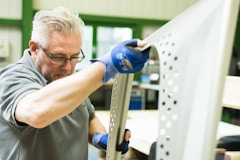
The Carbon Footprint of Aluminum Fenestration
The historical focus on reducing the carbon footprint of a building has recently shifted to include more emphasis on embodied carbon, the carbon

The historical focus on reducing the carbon footprint of a building has recently shifted to include more emphasis on embodied carbon, the carbon

BEST6 - The Next Generation of Building Technology

Green Wall applications are growing in popularity around the world. Often thought of as a decorative element they provide much more than aesthetic


Here we are, a full year after the initial COVID-19 surge rocked the United States. It’s hard to believe we’ve been living through the pandemic for a full year at this point; and yet it also feels like it’s been multiple years. We are beginning to see glimmers of hope on the horizon as more people..



Support our Mission - Donate Today

Glass spandrels are a common design strategy utilized to opacify floor levels in building facades. These opaque glass assemblies are integrated into


New approaches to lightweight metal forming have the potential to advance architectural fabrication, particularly in the design and engineering of


Over the last two decades, in what has been coined “The Digital Turn”, the introduction of parametric design software has afforded increased

The prominence of climatically responsive building facades through the use of kinetics has proliferated in recent years due to a concern for the



For architects, designers, engineers, manufacturers, consultants, and owners' representatives interested in methods for designing high-performance facades.

Over the years, the industry has relied heavily on the increasing performance of low-e coatings to drive window U-factors (thermal transmittance)